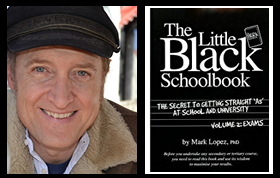Dr Mark’s The Meaning in a Nutshell
Ridley Scott (director) Hampton Fancher and David Peoples (screenplay), Blade Runner (1982)
Blade Runner (1982) is a science fiction film directed by Ridley Scott from a screenplay by Hampton Fancher and David Peoples who adapted the novel by Philip K. Dick, Do Androids Dream of Electric Sheep (1968). It presents the cinema audience with a dystopian future of Los Angeles set in 2019, where mankind’s obsession with technological advancement has produced unsavoury outcomes, notably an overpopulated, severely polluted planet that forces humanity to establish colonies in space. Meanwhile, the massive corporations that dominate society have produced humanoid robots, ‘replicants’, to serve mankind. These replicants are so advanced that they are difficult to tell apart from humans, and it seems unjust to treat them as things or as slaves. As slaves who resent their oppression, several of these humanoid robots revolt violently and die bravely, thereby generating fear in the community while also earning respect.
The film presents a warning about the danger of scientists and engineers who develop biological and robotic technology and who maybe on a path that may take this process too far. This new technology could get out of control. They may end up creating creatures that rival or challenge humanity for its place of pre-eminence in the hierarchy of beings. Rather than enhance humanity, the pursuit of technological advancement may threaten it.
Furthermore, the film expresses the concern that corporate capitalism will produce giant corporations that dominate society, imposing on it a kind of totalitarian oligarchy. It is totalitarianism imposed by the ruling corporations rather than by a one-party state.
Rather than the future being a time of affluence and human happiness, it is grossly overcrowded. It also has a multi-ethnic mix of people. The city scape is a mixture of the old and new, advanced technology and decay. Los Angeles had few skyscrapers in 1982, when the film was released, but this film’s vision of the future depicts a skyline so crowded with skyscrapers that they obscure the horizon. Meanwhile, the city seems so polluted that it is permanently dark, since the sun is obscured by clouds. Great chimneys belch out flame and smoke. There is almost permanent rain caused by pollution. The streets have an eerie glow from the glaring neon advertising signs of this highly commercialised world. The streets are also grimy and piles of rubbish are often to be seen. Older buildings seem to be in decay and are filthy. It is a world of ugly vistas rather than majestic urban and rural scenery.
The problems created by the creation of a replicant slave labour class has led to the creation a special police unit, the Blade Runners, whose job it is to hunt and destroy rogue replicants that are outside their designated areas. These special police units, and their less glamorous regular police counterparts, seem able to take liberties in carrying out their duties, which suggests a loss of rights and liberties for ordinary people.
The replicants have no rights but the film constantly toys with the idea that they are virtually human so they deserve to be treated with compassion, respect, and, in some cases, love. The film continually challenges the cinema audience to reflect on what it means to be human by blurring the distinctions between the humanoid robots and humans. The film suggests that when creatures are given memories they develop the capacity for emotions, the very emotions that are understood to be what distinguishes humanoid robots from humans. Importantly, the humanoid robots are shown to display a range of emotions, like loyalty, grief, vengefulness, love and trust. They also exhibit a very human desire to survive, seeking to prolong their existence by defying mortality.
While blurring the lines between humanoid robots and humans, the film provocatively advances the possibility that the hero of the story, the Blade Runner Deckard, who is on a mission to destroy stray replicants, may be a replicant himself. Another replicant, Gaff, seems to know Deckard’s private thoughts. Deckard had dreams of a unicorn that he did not discuss with others so it remained Deckard’s private thought. But close to the end of the film, Gaff made an origami unicorn and left it where Deckard will find it. This suggests that Gaff may have been privy to a file describing the implanted memories that make a humanoid robot seem more human. There may be such a file on Deckard. But the film is not conclusive. The film may have been merely toying with the ambiguity to suggest that we can never be too sure who is human and who is not, so the arbitrary extermination of stray humanoid robots becomes dangerously problematic and unjust.
Student resources by Dr Mark Lopez
© Mark Lopez 2021 All RIGHTS RESERVED
The purpose of the concise notes of Dr Mark’s The Meaning in a Nutshell is to provide much needed help to students seeking to unlock the meaning of the texts with which they have to deal. (More elaborate notes are provided in lessons as part of my private tutoring business.)
Subject: Blade Runner meaning, Blade Runner themes, Blade Runner analysis, Blade Runner notes
